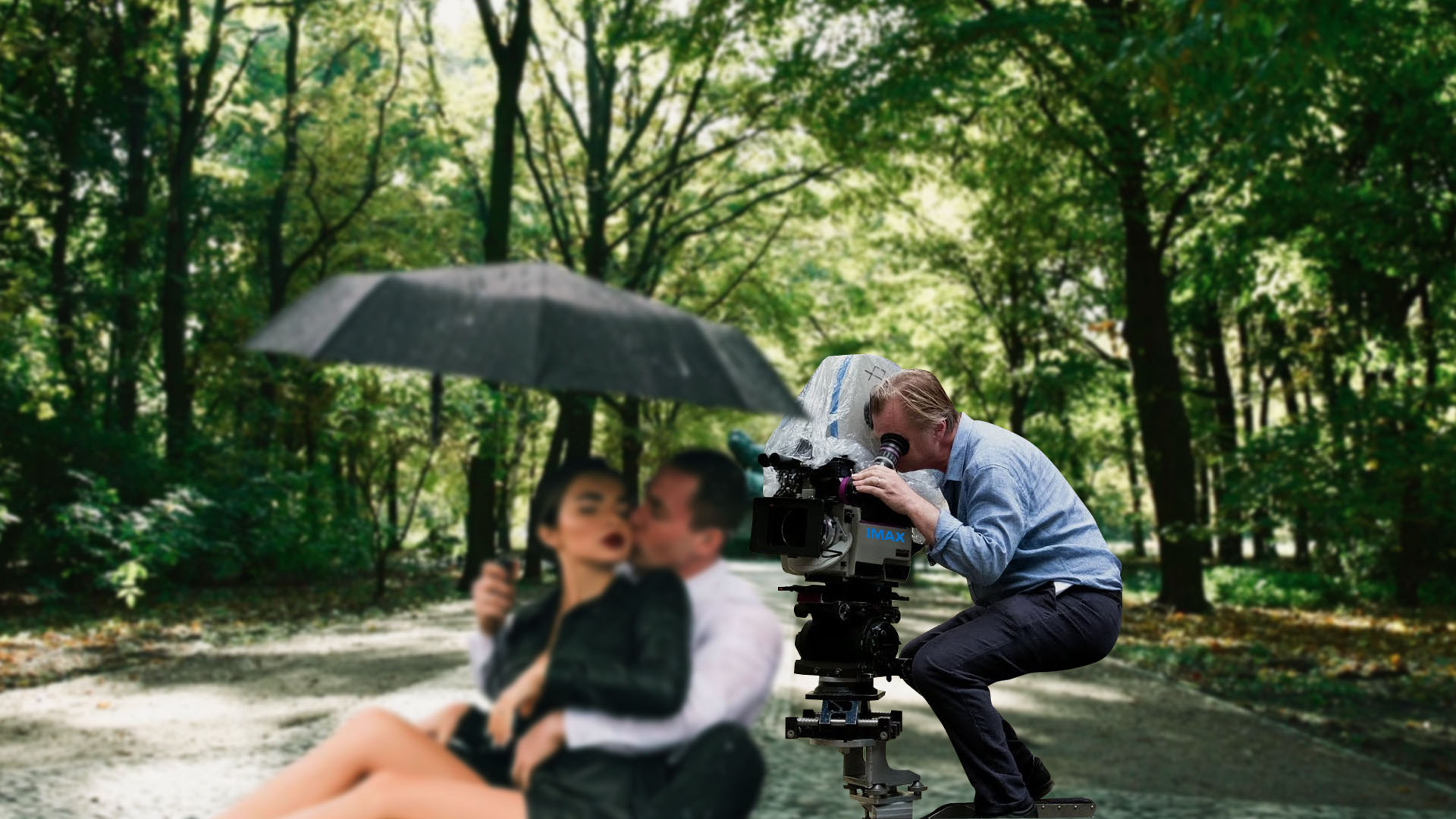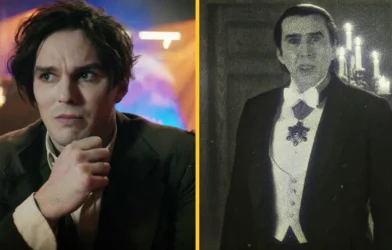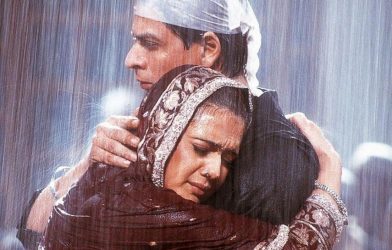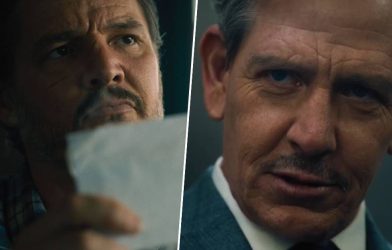In Hollywood, it’s often the big-budget special effects and glamorous actors that steal the spotlight. However, beneath the surface lies a trove of production hacks that are the real stars of the show. These behind-the-scenes techniques make the impossible seem to come to life.
This write-up sheds light on some of this lesser-known but frequently used production secrets, giving you an insight into the magic that often goes unnoticed by the audience.
1. The IMAX 70mm Challenge
IMAX cameras, which are becoming a staple among big-budget blockbusters, come with a major drawback: they’re incredibly noisy. This presents a significant challenge when filming dialogue-heavy scenes, as the camera’s loud whirring can overpower the actors’ voices.
The Workaround: Post-Production Magic
Since quieting the camera itself is a challenge, filmmakers employ extensive post-production audio processing. Dialogue is often re-recorded through a technique called ADR (Automated Dialogue Replacement – more on this in the following section) to ensure pristine sound in the final cut. Transformers: Age of Extinction (2014) and Transformers: The Last Knight (2017) were shot partially with IMAX cameras. The high-octane action and special effects often necessitated ADR to ensure that dialogue was intelligible amid the chaos of CGI explosions and mechanical sounds.
Fun Fact: Despite the technological advances, even today’s IMAX cameras haven’t entirely solved their noise issue, making ADR a staple for high-budget blockbusters.
2. The Secret of ADR (Automated Dialogue Replacement)
One of Hollywood’s best-kept secrets is how frequently dialogue is re-recorded after filming through ADR. In fact, it’s estimated that around 30-70% of dialogue in major films undergoes some form of ADR. This technique allows filmmakers to fix or replace problematic on-set audio— due to background noise, equipment issues, or performance adjustments.
When ADR Saves the Day
Many iconic films use ADR extensively without audiences ever noticing. Around 50% of Bane’s lines in The Dark Knight Rises were reported to be re-recorded using ADR. Tom Hardy’s initial voice performance was considered too difficult to understand during early test screenings due to the muffling effect of the character’s mask. Director Christopher Nolan (who’s a notable critic of using ADR) confirmed that they went back and altered some of the audio to make Bane’s dialogue clearer. Thanks to these adjustments, the audience felt that the character’s unique, slightly muffled voice enhanced his sense of mystery and made him even more menacing.
Pro Tip: Even though ADR replaces or enhances the original dialogue, directors often use multiple mics to capture different audio angles on set. This gives actors and sound engineers a reference for matching the tone, pacing, and emotional intensity during ADR sessions.
3. Body Doubles: The Secret to On-Screen Chemistry
When it comes to creating convincing on-screen chemistry, actors might not always be available—or compatible. In these cases, directors rely on body doubles. Through a combination of clever camera angles, lighting, and editing, body doubles are swapped in to maintain the illusion of closeness between characters.
Example from Hollywood
In the recent blockbuster Deadpool & Wolverine, the opening sequence, in which Ryan Reynolds’s Deadpool dances to NSYNC’s “Bye Bye Bye,” quickly became a fan favorite. However, what many viewers don’t know is that Reynolds himself isn’t much of a dancer.
To ensure the sequence looked flawless, professional dancer Nick Pauley was brought in as a body double to perform the choreography in the opening scene. Since Deadpool wears a full-face mask, the swap was even easier to conceal, allowing Pauley to perform the routine seamlessly. Clever editing and smooth transitions made it appear as though Reynolds himself was delivering the iconic moves, all while maintaining his character’s signature comedic style.
4. Miniature Sets in Modern Blockbusters
 Despite the rise of CGI, miniature sets are still a favored technique among filmmakers for creating highly detailed destruction scenes or complex environments. While many might assume that these models belong to the past, they continue to be used in modern films to achieve a sense of realism that digital effects sometimes lack.
Despite the rise of CGI, miniature sets are still a favored technique among filmmakers for creating highly detailed destruction scenes or complex environments. While many might assume that these models belong to the past, they continue to be used in modern films to achieve a sense of realism that digital effects sometimes lack.
Practical Effects in a CGI World
A recent example of a blockbuster utilizing miniature sets is Godzilla vs. Kong (2021), directed by Adam Wingard. The film features extensive use of miniatures to create the massive environments that the monsters inhabit.
During production, the filmmakers employed detailed miniature models to depict the iconic cityscapes that are often destroyed during monster battles. These miniatures allowed for precise control over camera angles and effects, enabling the team to create visually stunning sequences without relying solely on CGI.
For instance, while filming a scene where Godzilla emerges from the water, they used a miniature set for the city skyline, allowing for real water effects and explosions that interacted with the model.
Why It Works: Miniatures capture real-world physics—like lighting and destruction—better than CGI in some scenarios, making them perfect for creating scenes of large-scale destruction.
5. Invisible CGI Can Enhance Reality Without Being Noticed
Not all CGI in movies is about conjuring dragons or space battles. In fact, some of the best CGI is entirely invisible. Filmmakers use subtle CGI enhancements to alter scenes in ways that viewers never notice, maintaining the illusion of a flawless setting.
The Art of Subtlety
A perfect example of invisible CGI comes from “1917” (2019), a World War I epic directed by Sam Mendes. While the film is notable for its single continuous-shot appearance, its subtle use of CGI often gets ignored.
One of the most striking uses of invisible CGI occurred during a scene where the main character, Schofield, runs through the battlefield. Many small details, such as the debris flying, smoke, and even soldiers crossing the main character, were digitally removed to keep the focus on the hero.
Sam integrates CGI so well with the environment that viewers are completely immersed in the chaos of the war without ever realizing they are witnessing heavy digital manipulation. The result is a seamless blend of practical effects and invisible CGI that enhances the film’s gripping, real-time tension without distracting from the emotional core of the story.
Takeaway: For indie directors, learning how to use subtle CGI can save you from costly reshoots while still maintaining the realism that audiences expect.
6. AI in Scriptwriting and Production
AI has sparked controversy in the entertainment industry. Disney, in particular, has been accused of misusing AI on multiple occasions, such as using an AI-generated image for a Loki promo poster and digitally recreating Peter Cushing’s likeness for Rogue One: A Star Wars Story—22 years after his death.
Despite these legal and ethical concerns, AI’s role in filmmaking is growing, especially in the areas of scriptwriting, pre-production, and even actor manipulation. AI can predict budgetary needs, suggest plotlines, or generate entire scripts.
AI-Driven Films
One standout example is “The Irishman” (2019), where AI-based de-aging technology was used to make Robert De Niro, Al Pacino, and Joe Pesci appear decades younger.
AI is also being explored for script generation, with companies like OpenAI and ScriptBook testing tools that could predict a script’s commercial success before it’s even filmed. ScriptBook can even predict its box office potential, demographics and optimal casting choices.
7. Advanced Stunt Filming Techniques: Safety Meets Spectacle
Creating death-defying stunts on screen often looks easy, but behind the scenes, a myriad of techniques are used to ensure actor safety while still delivering breathtaking action. From wirework to CGI enhancement, modern stunt coordination has evolved to make even the most dangerous feats look effortless.
Iconic Stunt Work in Action
The John Wick franchise has become synonymous with high-octane action, and John Wick: Chapter 4 (2023) pushes the boundaries even further with its iconic stunt work. One standout sequence is the Paris stairwell fight, where Keanu Reeves battles multiple enemies while repeatedly falling down an imposing set of stairs.
To achieve this seemingly death-defying stunt, the production team employed a combination of real-time stunts and advanced techniques. Reeves’ stunt double, Vincent Bouillon, performed the jaw-dropping fall down more than 100 steps in a single take. The scene required extensive coordination, with wire rigs and carefully placed padding to ensure safety, while CGI was used to enhance the realism without compromising the actors’ well-being.
Another action-packed scene from the same movie showcases a sort of improvised poker table in which the Blind Man (that’s literally his alias name, otherwise also known as Caine) goes ham on Killa Harkan’s bodyguards after he cheated on his hand. Bullets and knives were flying everywhere, so it’s safe to say that these types of games are better to be played online, rather than IRL when it comes to John Wick’s universe.
Director Chad Stahelski notes the significance of the “kinesthetic sense,” a choreography technique that merges physical performance with environmental storytelling. It helps action feel both dangerous and immersive. By combining practical stunts with cutting-edge technology, John Wick 4 showcases how modern films create heart-pounding sequences that captivate audiences while keeping the cast and crew safe.
Filmmaking Tip: Pre-visualization (pre-vis) is a technique that allows filmmakers to create a digital mockup of a scene, helping them plan complex action sequences and ensure safety before shooting begins.
8. Foley Artistry Can Create Unique Sounds
While audiences are mesmerized by the visuals on screen, the sounds that accompany them are often the unsung heroes of filmmaking. Foley artists recreate everyday sounds in post-production using an array of objects, from celery sticks mimicking the sound of bones breaking to crinkling paper simulating footsteps on snow.
Famous Foley Creations
Dune (2021), directed by Denis Villeneuve, offered a masterclass in Foley artistry. The film’s vast desert landscape and its colossal sandworms required unique soundscapes to truly bring the world of Arrakis to life. Foley artists created the sound of the sandworms’ massive underground movements by manipulating metal grates and dragging heavy chains across vibrating sheets of tin. This allowed them to capture the deep, resonant rumble of the creatures moving through the desert.
One particularly fascinating Foley story from Dune involves the creation of the sound for the desert’s constantly shifting sand. Instead of relying solely on digital sound effects, the team used a surprising technique—pouring tiny beads of glass over different surfaces. This unconventional method helped achieve a more organic and realistic sound of cascading sands. The result was a more tactile auditory experience, making the otherworldly environment of Dune feel tangible and real to audiences.
Aspiring Foley Artists: You don’t need a Hollywood budget to create amazingly unique sound effects—just a little creativity and resourcefulness.
9. Montage Editing Can Build Emotional Impact
Editing is one of the most powerful tools a director has to shape the audience’s emotions, and no one understood this better than Alfred Hitchcock. One of his favorite techniques was the use of montage—a series of rapid cuts that build tension and manipulate the viewer’s perception.
The Shower Scene in Psycho
In “Psycho” (1960), Hitchcock’s infamous shower scene used over 78 camera angles and 52 cuts in less than three minutes to heighten the sense of chaos and terror. Although the violence is implied rather than shown, the quick cuts make the scene feel intense and shocking.
Fast forward to 2022, when the Oscar-winning film Everything Everywhere All at Once pushed the boundaries of montage editing to build emotional resonance amid its chaotic multiverse setting. Directed by the Daniels, the film expertly uses rapid-cut montages to convey protagonist Evelyn’s (Michelle Yeoh) journey through countless parallel lives. In one particularly striking montage, hundreds of Evelyn’s alternate lives flash by in seconds, capturing her emotional disorientation as she travels through her fractured reality.
To achieve this dizzying effect, the filmmakers employed a meticulous editing process, blending clips of diverse alternate realities in rapid succession. They filmed dozens of micro-scenes in different costumes, makeup, and settings, allowing them to stitch together moments where Evelyn experiences radically different lives—often within fractions of a second.
The quick cuts, combined with the film’s emotional depth, draw viewers into a state of cognitive overload—echoing the character’s own emotional turmoil—before leading to a powerful, cathartic resolution.
This modern use of montage editing proved that, just like in Hitchcock’s Psycho, the right series of cuts can make the audience feel a whirlwind of emotions, turning chaotic visuals into a deeply emotional journey.
10. Dolly Zoom To Convey Paranoia
The dolly zoom, also known as the “Vertigo effect,” is a visual trick that creates an unsettling, disorienting effect by zooming in with the lens while moving the camera backward (or vice versa). First popularized by Alfred Hitchcock in “Vertigo” (1958), the dolly zoom distorts perspective, making it a favorite for directors looking to convey unease or paranoia.
How Directors Use this Technique
Steven Spielberg famously employed this technique in “Jaws” (1975) when Chief Brody first realizes a shark attack is happening on the beach. The visual distortion heightens the audience’s sense of fear, making the moment more intense. Similarly, Martin Scorsese used the dolly zoom to create feelings of anxiety in “Goodfellas” (1990) during Henry Hill’s paranoia-fueled breakdown.
Pro Tip: The dolly zoom can be a powerful tool to visually communicate a character’s inner turmoil or disorientation without a single word of dialogue.
11. Layering Sounds to Build an Immersive Auditory Experience
The sound design of a film is as important as its visuals, and directors like Christopher Nolan have mastered the art of layering multiple sound elements to create rich, immersive auditory experiences. By overlapping sounds, filmmakers can evoke specific emotions, transport viewers into a scene, and heighten tension.
Sound Layering in Dunkirk
In “Dunkirk” (2017), Nolan used overlapping sounds such as ticking clocks, distant gunfire, and the hum of aircraft engines to immerse the audience in the intensity and urgency of war. This complex sound layering contributed significantly to the film’s palpable sense of tension, making the experience feel more immediate and chaotic.
Audio Hack: Aspiring filmmakers can use sound layering to add depth to their scenes. By carefully combining ambient noises, sound effects, and score, you can make the audience feel like they’re part of the action.
As the Spotlight Fades, the Magic Lives On
We hope you enjoyed these Hollywood production hacks and tricks. The true magic of cinema lies not just in the tools themselves, but in the creative mastery behind their use. Modern filmmakers continue to push the boundaries of what’s possible on screen. Each generation redefines these techniques, showing that innovation is not just about the latest technology—it’s about re-imagining how to use that technology to tell powerful stories. Ultimately, it’s this inventive spirit that ensures the magic of cinema will always live on.










